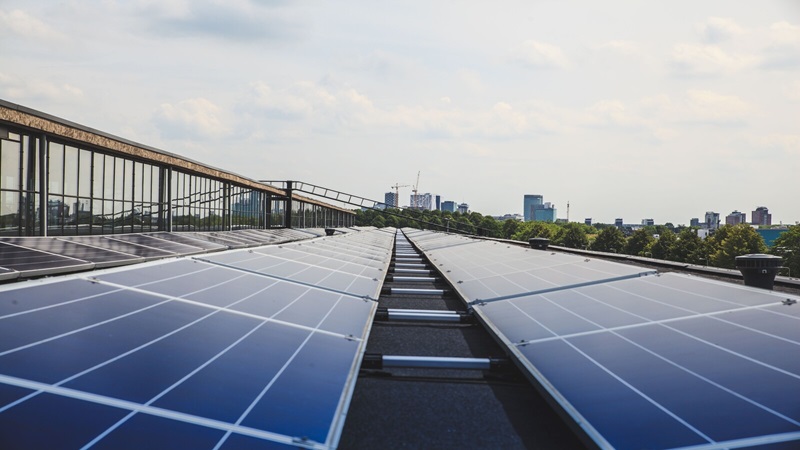How Smart Local Energy Systems are supporting the path to net zero
The upcoming heat zoning regulations recently announced by the UK Government are not only set to be a game changer for the decarbonisation of the UK energy systems, but for the built environment too, mandating businesses from across the industry to connect to a local heat zone.
And as the nation’s energy systems evolve away from large scale power sources towards Smart Local Energy Systems (SLES) - that provide decentralised sources of heat and power much closer to the point of consumption - the scope of opportunity is immense.
Research trials from Innovate UK estimate that the UK could save up to £8bn per year by 2040 if even 50% of energy went through SLES. Yet, despite this potential, we are still seeing barriers to more widespread adoption of a local energy approach. As well as an enabling legislative framework, it requires cross-sectoral collaboration and the integration of new technologies to make it happen. Claire Harrold, Sustainability Operations Director at Mace, looks at the suite of advancements in SLES technology and what is needed to kickstart their role in achieving net zero ambitions.
Taking a weight off the power grid’s shoulders
Energy efficiency is the fundamental component that underpins a successful SLES. This is achieved through two distinct approaches that must work hand in hand, first through improving the thermal performance of buildings connected to the network, and second by actively optimising energy consumption patterns through demand-side management and the balancing of heat and power between buildings. Demand-side management allows consumers to reduce their energy usage during peak hours, saving them money and reducing grid congestion. We have seen providers such as Octopus Energy offering free electricity for customers who reduced consumption during peak hours. The next step is for both energy providers and government to further incentivise more considerate consumption.
Consumers can leverage digital insights to make informed decisions about their energy requirements. Increased transparency and awareness empowers individual consumers to become more conscious and in control of their energy usage, often leading to a reduction in energy demand. This will require government backed schemes that incentivise consumers to become ‘prosumers’ who profit from redistributing their excess energy across their community grid.
Stamping out waste heat and energy
Central to the SLES concept is the generation of electricity through smaller-scale, low carbon sources that are closer to the point of use. A SLES that locates energy generation closer to the end users reduces the inevitable loss of energy from transmission. The result is a more efficient and resilient grid.
Identifying and harnessing localised inefficiencies is another pivotal way of reducing energy demand. We know that within many urban areas, built environment and infrastructure players such as data centres, underground transport and other industrial processes, can generate a huge amount of heat as a by-product that is currently released into the atmosphere, unused. Currently, the Greater London Authority estimates that up to 76% of heat demand within the city could be captured from waste heat and redistributed. Mace is aware of how energy intensive data centres are, which is why one of our latest data centre projects in Denmark is using ‘waste’ heat to power 10,000 homes in the local area. It is through collaboration between these interconnected sectors - transport, technology and heavy industry - that efficient solutions can be uncovered to redistribute energy. We must develop our infrastructure with deliberate intent to enable the capturing and sharing of energy and heat.
Smartening up the energy skills playbook
SLES use advanced digital technologies, data analytics, and real-time monitoring to optimise grid operations. They enable more efficient grid management, grid stability, and load balancing. These systems can dynamically adjust energy flows, respond to changing conditions, and optimize energy distribution. As machine learning continues to become more sophisticated, SLES will eventually be dominated by autonomous systems that corroborate the information from across the local systems to produce an optimised flow of energy, both within and between buildings. The energy industry must begin prioritising these technical skills now and implement education programmes that will future proof the energy sector for a smart, locally based system.
The SLES is not an energy system of the future. It is happening now, with many countries (most notably the Nordics) leading the way. In the UK we are playing catch up and the new heat zoning regulations are a welcome enabler of change. However, going beyond this will require legislative targets that impose a timeframe on energy companies, enabling local energy networks and compliance from the built environment to design and create buildings that are “heat network ready”.











